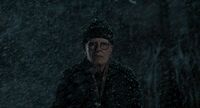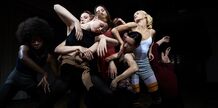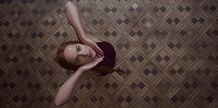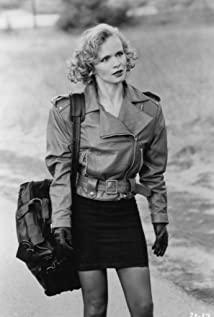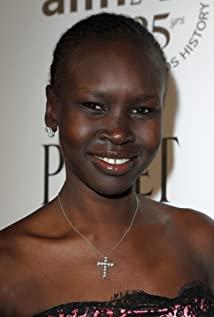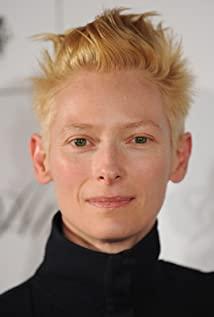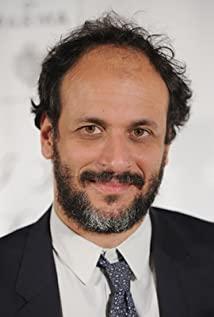King of Death: It's hard for anyone to imagine, what the famous Guador, who is famous for "Please call me by your name", will look like in his remake of "The Wind and Wind". Looking back at last year's Venice Film Festival, "The Wind and Wind" encountered two poles of word-of-mouth. Some people said that the aesthetics were terrible, some said that it almost surpassed the original version, and some said that the director might have gone crazy. Later, we heard that Quentin cried emotionally after reading it.
Author | Peter Pan
Earlier, after the premiere of "The Wind and Wind" at the Venice International Film Festival, there has been constant controversy. The rotten tomato level has dropped to 62%, and the score of the show is the lowest. The first impression of most film critics/journalists at the premiere was that they were confused except for not adapting. Frankly speaking, this time director Luca Guadagnino surprised people in two places, one is his personal style, and the other is the adaptation of the original.
The reason why the 2018 edition of "Wind Wind Flutters" is eye-catching is also because of these two important factors. For movie fans, "The Wind and Wind" in 1977 is a high mountain in Italy's "lead yellow movie". Regardless of the photographic composition and style design, this Italian Cult movie, which focuses on erotic violence, has become a highly condensed artistic type. classic.
When Guadagnino announced this project at the beginning, although there were doubts, it was generally optimistic. Fans’ confidence in Guador came from last year’s popular "Call Me by Your Name", but from a plot point of view, it is actually only a very common syrup film about the sprouting of the first heart.
Fortunately, Gua Dao has created a masterpiece with a very personal brand. The overall audiovisual language not only presents a highly unified stylization, but also makes people shine in many transitions. It's a pity that "Call Me by Your Name" has a small innate format, and the space it provides is far from satisfying Guadagnino.
The new version of "Yin Wind Array" breaks the leaded style of the original "Yin Wind Array" and adds more personal cognition of politics, society, culture and even ideology to the concept. Different people have different opinions on whether the ability can control ambition, but from the perspective of artistic creation courage, it is still worthy of appreciation.
1. New and Old
Before the official release of the new version of "Golden Wind", Guadagnino invited many blockbuster figures in the film industry to watch the movie in advance. Jessica Harper, who played the role of Susie in the old version of "The Wind and Wind", said after watching "This is the most wonderful horror movie I have ever seen." Quentin, who is known as a fan of "The Wind and Wind", held Guadagnino with excitement after watching it. Aquito himself also held a positive attitude towards this adaptation.
a. The imperative break and establishment of the movie itself
Those who are familiar with the old version of "The Wind and Wind" probably will not forget the very personal style of compositional aesthetics in the film. Under the impact of malachite green, bloody red, sapphire blue, earth turmeric, high saturation and strong chromatic aberration, the electronic psychedelic music bakes a rich and coquettish heterogeneous world.
The original film also uses a large number of elements such as triangles, color-blocking floors, stained glass, mirrors, windows, etc. in symbolic metaphors, slowly pushing to the climax of the end with the mysterious breathing rhythm. In the final witch sacrifice scene, the confrontation between good and evil is indulged in the big color blocks of scarlet, sapphire blue, and bright yellow.
It can be said that the old version of "The Wind and Wind" has reached the culmination of the highly artistic style of audio-visual language, and it can also be said to be the pinnacle of Italian lead movies.
The so-called lead pornographic films are after the Italian Neorealism, they are more intensely sensually dramatic. They include horror, eroticism, horror, torture, mystery and other themes. They are keen to describe scenes with a sense of death and are mostly adapted from novels with pornographic covers. , So it is called Giallo Film (Giallo Film), in fact, it is the Italian cult in plain terms.
Due to the excessive tendency towards functional formal artistic expressions, this type of cult movies (including Aquido’s "The Wind and Wind") do not have much thematic pursuit, the story script is single and the characters’ motives are very weak, you may watch There is no way to extract the main theme with the dominance function in the whole film.
From this point of view, at least Luca Guadagnino is still very thoughtful. Director Gua once mentioned in an interview three years ago that the remake of "Golden Wind" was his long-cherished wish. "When I saw this movie when I was 13 years old, I was shocked by the scenes in the film. At that time. I started to want to be a director, and draw the "wind gusts" in my mind on the notebook poster."
Now that Aquido's version has reached the peak of his personal aesthetic style, no matter who recreates "The Wind and Wind", it is impossible to follow the old path. In addition to following the main line of "the heroine went to dance school from home with all her heart, unexpectedly entered the magic cave, experienced several strange and terrifying disappearances, and gradually discovered the witch altar hidden in the bottom of the school", regardless of the compositional aesthetics , The theme plot, the director of the melon must only use their own ideas to reshape "Yin Wind Flutters".
b. Thesis-style film structure
In the new version of "The Wind and Wind", the film still uses the obvious three-layer structure to deepen layer by layer. The film is divided into six chapters and an epilogue to complete the overall structure laying. Compared with the old version, the director also laid another The "dotted line" corresponding to the main line, the "virtual" of reality and the "real" of fiction constitute intertextuality.
Someone once described the new version of "Yin Wind" as Guadagnino's "Mother!" "(Darren's 2017 film), but in terms of structural design, Guadao is more realistic than Darren in terms of concept, and uses parallel clues in the structure of the film to give the audience enough hints.
At the beginning of the film, the audience was hinted that the missing young female dancer Patricia asked for help. The heroine Susie (played by Dakota Johnson) traveled all the way from the United States to West Berlin during the Cold War, and was selected by the head of the dance company, Mrs. Blank (Tilda Swinton), to enter a modern dance company.
The film uses a lot of straightforward quick montages, suggesting the fragmentation and conflict of the character's mental state, and a lot of simple and direct mirror composition to show the character's situation.
When Susie first arrived at the dance troupe, the camera gradually pulled away from the space. The hostess first caught a glimpse of the decoration of the mirror in the lobby, which invisibly highlighted the complex structure of this strange building in reality and concept, and the environment where the characters are in it.
In addition, when Susie was formally accepted by the dance company, her partner Sarah played for the first time. The two stood face to face in front of the mirror. The picture was framed with oblique angles to show the communication between the characters, and at the same time, the difference between the two people’s situation was shown through focus. . Sarah's deep focus processing highlights the imaging in the lens, and Susie's shallow focus processing highlights the contrast of real characters. The in-lens zoom makes the three-dimensional sense of the character set up on the paper.
From the normal but mysterious modern dance troupe in the first and second acts, to the third act, the shell was unveiled early to show its violent and bloody side. After the fourth and fifth acts follow the clues of the mystery, Finally, in the sixth act, it enters the bloody, rotted core of the witch altar, like a bloody and sticky sarcoma, stretching out its tentacles deep underground to suck fresh and invigorating blood.
Layers of narratives that go deep into the surface seem to be similar to the old version. In fact, Guadagnino has added a hidden thread, through the metaphor of a witch altar, enticing the audience to think about the core of the film. The director set two clues in the film. The first is that the time background is set in 1977, which is the turbulent period of "German Autumn". The Cold War confronted East and West Germany, and the story took place in an extremely chaotic ideology and social situation.
The second clue is the family of the psychotherapist Dr. Klemperer. The wife who disappeared in the Nazi bombing of World War II has always been a mystery and scar in the life of the doctor. The director used points to show the turbulence of the overall social atmosphere. The social form in the realistic meaning and the witch's cave in the video presentation are twisted together to form the unique aesthetic style in the film.
2. Dance and Witch
The most subverted version of the new version of "Golden Winds" is actually the aesthetic style. Compared with Archito's coquettish and coquettish aesthetics, Guadagnino's gloomy atmosphere has a Fassbinder atmosphere. Guadagnino stripped the vulgarity and eroticism of the old works, but instead created a gray and cold tone space.
Leaving the rich colors of the old version, Guadagnino sets the story scene in Berlin. In addition to the ideological confrontation and game, the gloomy and cold winter of Berlin is also the main atmosphere of the film. The tall buildings in the film do not have the old parquet floor. And stained glass, replaced by more grainy rough decoration and high-rise buildings, to support the infiltrating psychological dynamics in the empty space. "Red" and "Female Body" lacked a sense of sensational stimulation, on the contrary, they seemed to be frozen into coldness and horror by the cold of Berlin winter.
The most obvious change is to embody the witchcraft crazy dance in the film. In anthropology, witch and dance have always been two interlinked fields. There are two dances in the film that are the most eye-catching on the screen. . As the turning point of the film's midfield, the scene is switched between different dance scenes in the two rooms to achieve the stimulating conflict between "elegance" and "violence".
In the dance room, Susie finally tried the role of the lead dancer for the first time. She danced with a trace of evil charm in her extremely powerful and aggressive body language, and she banged to the ground. The camera is switched, the scene is switched to the mirrored room downstairs, and the body of Olga, the front lead dancer, follows the direction of Susie's dancing, being beaten, broken, and kinked by an invisible force.
The terrifying and distorted state, like a broken and discarded rag doll, in the audio-visual of broken limbs, the sense of fear is infinitely magnified by the reflection of the mirror.
The camera switches back and forth, Susie's charming dance crosses with Olga's screams and the crisp sound of fractures, and the violence becomes more terrifying in the elegant dance. It was as if a rotten bloody sarcoma was sucking, and when the female body was used up the last flesh and blood, the magic claws clamped on the more attractive fresh flesh.
In the climax dance group scene at the end of the film, splashing organs and blood set off the nauseating rot of the witch altar, especially against the gray and brown-green background of Cold War Berlin. In the middle of the film, there is also a group dance of young dancers. The red tassels on the girls dance like blood. The scenes of the film completely get rid of the erotic stimulation of the lead pornographic film, and the bodies of the witches have no sensuality.
In the presentation of the appearance of bones and flesh, the neutral female body actually shows the mysterious ritual with a sense of power in the ancient witch salty sacrifice, and the bloody ending forms the visual emotional advancement of the action, and dances to show the thinking distortion after witching. The materialization of witchcraft and politics has refined the core of the film.
3. Reality and Supernatural
The new version of "The Wind and Wind" contains clues and hints with political metaphors and ideologies. This is also a place that makes most viewers at a loss. The hints and clues have been given clearly, but it is difficult to find out that the film can prove the evil nature of witches and witches. Substantial evidence of the relationship between ideologies.
In the author's opinion, Guadagnino gave three key words "Germany Autumn", "Hijacking Riot", and "Nazi Legacy", and the location of the story-Berlin's selection is also full of political interest during the Cold War. . If you look at the comparison between the dominant line and the hidden line, the leftist avant-garde youth demonstrations at the beginning of the film are dissatisfied with the GDR system after World War II. It is not that the Mennonite female protagonist in the film left her original family and devoted herself to her own taste. In the environment?
The identity of Susie in the film is set as a Mennonite family in Ohio, and the break of the relationship between Susie and her mother is pointed out at the end of the film. This background explanation with religious ideology hints to the audience that Susie is ideologically disconnected from her native family, and because of her own evil spirit, she will hit it off with the Berlin dance troupe.
Most of the so-called leftist avant-garde youths are not the process of their own radicalization and anger, abandoning the value system of the original society, and trying to find the "Garden of Eden" in another system. The radical left, which claims to cleanse the poison of the Nazis and promote social reform and progress, prefers cruel methods such as hijacking and assassination. It is not just a dance group with elegant art on the surface, but it is extremely cruel underground.
For a long time, the Nazi Holocaust has been misinterpreted as a metaphysical collective unconscious madness. Guadagnino’s "Storm of the Wind" uses a materialized religious ideological terror to try to tell people that this subconscious demonization is complicity. result. All fierce political movements, regardless of left or right, are based on ideological brainwashing. What is the difference between political extremism and religious fanaticism?
Judging from the old and new "Wind Winds", the high level of the Archito version has established the benchmark of Italian lead movie artistry. The three-level construction of the text and the strange and strong aesthetic design have pushed up the horror. The overall height of the movie. But from the point of view of the value core of the film, the 1977 "Storm of the Wind" did not establish a metaphysical value orientation that can govern the entire film.
On the other hand, in the new version of "The Wind and Wind", in the author's opinion, Gua Dao has no intention to create an Aquido-style witch world, but broadens the film's connotation from the ideological point of view. The distorted value orientation and ideological control formed under the macro pressure of the society are the most core driving core of the film, and instead establish a more highly unified ideological logic.
Guadagnino bases his sense of fear on the real social environment and presents it in a surreal way. The fear of the social environment and the abnormality of the individual in the image form a counter-textual relationship. To a certain extent, horror films have the most anti-social factors. The horror breeds in the overall pain of society and manifests itself in a surreal form. This surreal performance is derived from reality and can have metaphysical social values. Find the basis in reality.
Strictly speaking, Guadagnino’s "Wind Winds" is not a thriller. If you have to make the next conclusion, the new version of the film tends to be more social horror, as the screenwriter David Kaganich said, the film The modern dance troupe draped in witches is just a guise, and the director stirred up a greater vortex of fear in the remake, rather than horror and suspense.
While setting the drama's suspicious line, the director buried a deeper theme line under the surface, and the corresponding nested structure is indeed more like "Mother! "The technique. It can be said that Guadagnino is holding great ambitions to re-create the "Silver Winds" with its personal core.
Although Aquido’s version is more likely to reach intracranial orgasm after taking drugs in highly purified sensory stimulation, Guadagnino clearly gives this nightmare a richer explanation. Through a large number of fast montage editing techniques, Unearth the underlying anxiety at the root of the nightmare. It's like opening a pus-filled wound, with yellow pus flowing out, and the truth hidden by the scab.
From the expression point of view, Gua Dao clearly has personal intentions. The scenes interspersed in the narrative are frozen to more or less reveal the information of social horror, current affairs news on the radio, weird patterns on the newspaper and the print on the restaurant table. Terror" magazine cover and more.
However, from the perspective of the overall completion of the work, the director seems to be anxious in terms of expression. Too many concepts are implanted, and concepts such as feminism, witch culture, Nazis, Cold War, and Lacanian psychoanalysis are too frequent. Inlaid in it, the work loses the main tone in the second half, and the plot branch is too fragmented and independent, leading to the collapse of the whole.
In particular, Susie’s final identity reversal has also lost the key arc of character creation. The setting of “Suzy is the Witch” also makes it difficult to establish the previous foreshadowing. The text cannot be justified. It is the film that makes people here. The reason why I got more and more impatient in more than two hours.
Author | Peter Pan; Public Number | Seeing Death in Movies
Edit | Riding a Rooftop Boy; please indicate the source for reprinting
View more about Suspiria reviews




